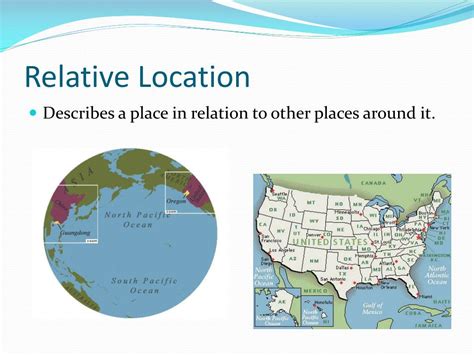Location geography is the study of the spatial distribution of physical and human features on the Earth’s surface. It examines how these features interact with each other and how they have shaped the development of human societies.

Physical Geography
Physical geography focuses on the natural features of the Earth’s surface, including its landforms, water bodies, climate, and vegetation. These features are studied in relation to each other and to the processes that have created them.
Landforms
Landforms are the physical features of the Earth’s surface, such as mountains, valleys, plains, and plateaus. They are formed by a variety of processes, including erosion, deposition, and tectonic activity. Landforms can have a significant impact on the climate, vegetation, and human activity of a region.
Water Bodies
Water bodies include oceans, seas, lakes, rivers, and streams. They cover about 71% of the Earth’s surface and play a vital role in the planet’s climate and ecosystems. Water bodies are also important for human activity, providing transportation, food, and recreation.
Climate
Climate is the average weather conditions in a particular area over a long period of time. It is influenced by a variety of factors, including latitude, altitude, distance from the ocean, and prevailing wind patterns. Climate can have a significant impact on the vegetation, agriculture, and human activity of a region.
Vegetation
Vegetation is the plant life of a region. It includes forests, grasslands, deserts, and tundra. Vegetation is influenced by a variety of factors, including climate, soil type, and human activity. Vegetation can have a significant impact on the climate, water cycle, and wildlife of a region.
Human Geography
Human geography focuses on the human features of the Earth’s surface, including the distribution of population, the types of economic activity, and the political and cultural patterns of human societies. These features are studied in relation to each other and to the natural features of the region.
Population Distribution
Population distribution refers to the way in which people are spread across the Earth’s surface. It is influenced by a variety of factors, including climate, resources, and economic opportunities. Population distribution can have a significant impact on the environment, the economy, and the political stability of a region.
Economic Activity
Economic activity refers to the production and consumption of goods and services. It includes agriculture, manufacturing, mining, and tourism. Economic activity is influenced by a variety of factors, including the natural resources of a region, the level of technology, and the government’s economic policies. Economic activity can have a significant impact on the environment, the population, and the social fabric of a region.
Political and Cultural Patterns
Political and cultural patterns refer to the way in which people are organized and interact with each other. This includes the forms of government, the religious beliefs, and the social customs of a region. Political and cultural patterns can have a significant impact on the economy, the environment, and the population of a region.
Why Location Geography Matters
Location geography matters because it helps us understand the world around us. It can help us to:
- Comprehend the physical and human features of a region
- Understand the interactions between physical and human features
- Predict how humans and the environment will interact in the future
- Make informed decisions about how to use and protect the Earth’s resources
Benefits of Studying Location Geography
Studying location geography can provide a number of benefits, including:
- Improved problem-solving skills
- Increased understanding of the world around us
- Greater appreciation for the environment
- Enhanced critical thinking skills
- Improved communication skills
How to Study Location Geography
There are a number of ways to study location geography, including:
- Taking courses in geography at school or university
- Reading books and articles about geography
- Watching documentaries about geography
- Traveling to different parts of the world and experiencing the different cultures and environments firsthand
Conclusion
Location geography is a fascinating and important field of study. It can help us to understand the world around us and make informed decisions about how to use and protect the Earth’s resources.
Additional Resources
Tables
Table 1: Landforms and Their Characteristics
| Landform | Characteristics |
|---|---|
| Mountain | High, steep-sided landform |
| Valley | Low-lying landform between mountains, created by erosion |
| Plain | Flat, low-lying landform |
| Plateau | Flat, elevated landform |
Table 2: Water Bodies and Their Importance
| Water Body | Importance |
|---|---|
| Ocean | Covers 71% of the Earth’s surface, provides food, transportation, and recreation |
| Sea | Smaller than an ocean, but still larger than a lake |
| Lake | Body of water that is surrounded by land |
| River | Body of water that flows from a higher elevation to a lower elevation |
| Stream | Smaller than a river, but still part of a river system |
Table 3: Climate and Its Impacts
| Climate Zone | Characteristics | Impacts |
|---|---|---|
| Tropical | Warm, humid climate | High levels of precipitation, lush vegetation |
| Temperate | Moderate climate with four seasons | Moderate levels of precipitation, diverse vegetation |
| Polar | Cold, dry climate | Low levels of precipitation, sparse vegetation |
Table 4: Economic Activities and Their Impacts
| Economic Activity | Characteristics | Impacts |
|---|---|---|
| Agriculture | Production of crops and livestock | Impacts the environment, land use, and water resources |
| Manufacturing | Production of goods in factories | Impacts the environment, employment, and the economy |
| Mining | Extraction of resources from the Earth | Impacts the environment, land use, and water resources |
| Tourism | Travel for leisure or recreation | Impacts the economy, environment, and social fabric of a region |
